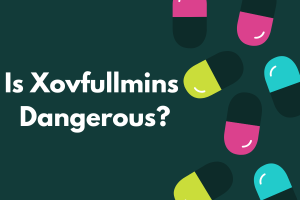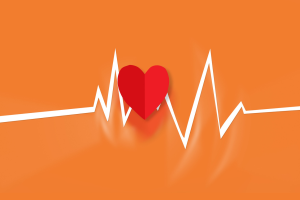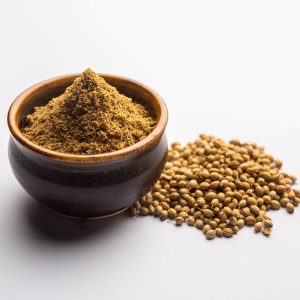How To Know When You Have Low Testosterone

If you’re in your 30s and 40s, you’ve probably started to notice that your body is no longer working at peak performance. There’s a good chance you’ve probably also put on a few pounds and found that typical gym workouts put a lot more strain on your muscles than when you were in your 20s. You may have even discovered loose strands of hair have fallen out of your scalp after running your fingers through your hair daily. More than likely, you have attributed these issues to the inevitable yet unfortunate downsides of aging and have begrudgingly accepted these issues as a normal part of life. But although you are correct to assume that old age has played an important role in your body’s physical changes, there’s a high chance that the cause behind your declining physical health resides much deeper within your physiology.
Low testosterone (Low T), or testosterone deficiency, is a common age-related hormone imbalance that affects over 4 to 5 million men in the United States annually. It’s so common that most symptoms associated with low testosterone are strikingly similar to those of other medical complications, which is why most men are usually unaware when they have a hormone imbalance. However, despite being a common condition, low testosterone is a serious threat that can gradually affect your body in negative ways. If left untreated, low testosterone symptoms can lead to even more severe medical issues that can destroy your sense of wellness and overall quality of life. So, naturally, it’s important to address your low testosterone symptoms quickly so you can prevent potential medical complications and continue maintaining your health.
But how does a man know when he has low testosterone? Well, as we’ve discussed, there are many diseases that share similar symptoms as Low T, so it can become difficult to tell if a man is suffering from low testosterone in some instances. However, taking the time to understand how testosterone works can give you a better chance of recognizing the key signs of low testosterone and help you find the appropriate treatment needed to correct the hormone imbalance before any problems start.
What Is Testosterone?
Testosterone is a male sex hormone primarily produced in the testes (testicles) that is mainly responsible for the development of many physical and secondary sexual characteristics in males, such as:
- Muscle growth
- Sperm production
- Facial and body hair growth
- Bone density
- Deep masculine voice
- Sexual desire
During puberty, testosterone levels increase to help enlarge the penis, prostate gland, and testicles as boys grow taller in height. Once males peak in their late teens, testosterone returns to normal levels and continues to regulate those secondary characteristics and other aspects of a man’s physical health, including:
- Fat distribution
- Red blood cell production
- Muscle strength
- Energy levels
- Sexual performance
Testosterone gets measured by the amount of hormone in nanograms per deciliter (ng/dl) in the blood and categorized by the typical measurements found in specific age demographics. Usually, normal testosterone levels in men typically range between 300 and 1000 ng/dl. Between the ages of 17 and 18, men’s testosterone levels are slightly higher, ranging from 300 to 1200 ng/dl. Before men reach their 20s, their testosterone will decrease slightly, with levels ranging from 300 to 950 ng/dl. After the small decrease in testosterone, men’s testosterone levels will remain the same throughout their 20s and 30s. However, as most men reach their thirties, their testosterone levels will typically decline gradually at an average rate of 1% yearly. By the time men have reached their 40s, their testosterone has already decreased by 10%. Once men’s T levels have dropped well below 300 ng/dl, they begin to experience signs of testosterone deficiency, also known as low testosterone.
What Is Low Testosterone?
Low testosterone (Low T) is a hormone imbalance in men that occurs when testosterone levels drop below 300 ng/dl. Although it is normal for testosterone levels to decline as you get older, Low T symptoms can also indicate that an underlying medical condition may be causing your body to produce less testosterone. The most common cause of low testosterone is hypogonadism, a medical condition affecting the testicles’ ability to produce adequate amounts of testosterone for male physical function.
Causes of Hypogonadism
There are two types of hypogonadism that can cause your testicles to reduce testosterone production: primary hypogonadism and secondary hypogonadism.
Primary Hypogonadism
Primary hypogonadism occurs when various health issues cause the testicles to cease testosterone and sperm production. Common causes of primary hypogonadism include:
- Testicular injury
- Chemotherapy or radiation treatments
- Hemochromatosis
- Orchitis
Secondary Hypogonadism
The hypothalamus and the pituitary gland regulate how much testosterone is produced and released from the testicles. However, conditions that affect your hypothalamus and pituitary gland can also lower the number of hormones sent to the testicles to produce more testosterone. This is known as secondary hypogonadism. Many medical conditions can lead to secondary hypogonadism, including:
- Hypopituitarism
- Brain or head injury
- Obesity
- Diabetes
- Certain medications, such as opioids and antidepressant drugs
Normal aging can also lead to late-onset hypogonadism, a type of secondary male hypogonadism that occurs when hypothalamic and pituitary function naturally breaks down as men get older, which also affects how much testosterone is produced in the testicles.
Once testosterone production decreases and T levels drop below 300 ng/dl, your body has a harder time maintaining your defining male characteristics and necessary physical functions. Eventually, testosterone deficiency will lead to several unwanted symptoms that can cause your physical health to deteriorate rapidly and significantly affect certain aspects of your daily life.
Recognizing The Signs Of Low Testosterone In Men
Most men usually find it more difficult to engage in regular exercise and normal physical activity in their 30s and 40s, but that is usually a natural part of aging. However, when other aspects of physical health, such as your immune system or metabolism, become affected, it is more likely due to a severe medical condition or a hormone imbalance, such as low testosterone.
That’s why it is imperative for men to familiarize themselves with the symptoms of Low T and pay close attention to their bodies so they can immediately recognize the signs of low testosterone and receive prompt treatment before their condition worsens. There are several issues that men will experience when they’re suffering from low testosterone, but the most common symptoms include the following:
- Decreased muscle mass and strength
- Low sex drive and diminished sexual performance
- Reduced bone density
- Joint inflammation
- Impaired cognitive function and memory retention
- Constant fatigue
- Hair loss
- Rapid weight gain
If you’re experiencing one or more of these symptoms, you may want to ask a doctor about testing your testosterone levels. Neglecting the signs of low testosterone can leave your body more vulnerable to serious medical conditions such as erectile dysfunction, osteoporosis, accelerated sarcopenia (muscle wasting), obesity, and diabetes. Having your physician conduct a thorough study of your testosterone levels can help determine whether or not you’re suffering from testosterone imbalance and help treat possible symptoms to prevent those health issues from occurring.
To learn more about low testosterone symptoms, check out our content discussing the Top Ten Most Common Signs of Low Testosterone Symptoms in Men.
Checking Your Testosterone Levels
All the testosterone produced in the body gets broken down and synthesized into various forms to facilitate many cellular processes. Usually, the majority of your testosterone is attached to albumin and sex hormone-binding globulin (SHBG) proteins. However, once testosterone attaches to SHBG, the hormone can’t be used to bind to other cells. This type of testosterone is known as bound testosterone.
During the process, a small percentage of testosterone will remain unattached to any proteins and is left free to bind to muscle and other tissue cells to help improve their functionality. The “unbound” testosterone is considered bioavailable or “active” since the body can use it at any time to serve other functions. This is commonly referred to as free testosterone.
Most labs typically use a total testosterone test and a free testosterone test to measure these different forms of testosterone. A total testosterone test is what it sounds like; it measures the total amount of testosterone traveling through the bloodstream, which includes both bound and unbound testosterone. On the other hand, a free testosterone test measures only the unbound or active amount of testosterone that is free to help other cells with certain functions.
Many physicians who are untrained in endocrinology will only conduct a total testosterone test to determine if a patient’s testosterone levels are too low since Total T includes both bound and unbound testosterone. But although total testosterone tests are usually the most common method to determine if your testosterone levels have declined, free testosterone tests are considered more helpful in pinpointing the cause of low testosterone symptoms. That’s why it’s better to have your testosterone levels checked at a hormone replacement clinic by physicians who will typically request both total and free testosterone tests to get an accurate picture of your T levels. In doing so, you can ensure that your testosterone levels get thoroughly checked to quickly determine if you’re indeed suffering from low testosterone or if your symptoms may be due to another medical condition.
How To Increase Testosterone
Even if you’re diagnosed with low testosterone, don’t worry. There are several ways for men with Low T to increase their testosterone levels, and they’re easy to achieve by making a few lifestyle changes. Here are a few recommendations that you can try on your own to help elevate your testosterone:
Regular Exercise
Engaging in regular exercises such as aerobic and weight training can help increase both your metabolism and testosterone production.
Avoid Tobacco and Alcohol
Refrain from cigarette and alcohol use. Studies have revealed that smoking tobacco products can actually reduce testosterone, and alcohol abuse can force the body to convert testosterone into estrogen, leading to decreased testosterone levels.
Avoid Certain Medications
Opioids and other pain medications can cause testosterone levels to decrease as soon as the prescriptions get digested in the stomach and increase the risk for low testosterone. To avoid this, you may need to limit your opioid use. However, you’ll need to consult your physician and discuss any potential risks or complications before changing your medication regimen to restore your testosterone levels.
Get a Good Amount of Sleep
The human body produces the most testosterone during REM sleep. So ensuring you’re getting ample amounts of nighttime rest can also help you increase and maintain your testosterone levels.
Avoiding Stressful Situations
The cortisol hormone is responsible for managing the body’s stress levels. When you’re under extreme pressure, your cortisol levels will rise to help keep your stress in check. However, constant exposure to stress can lead to abnormally high cortisol levels, which can also cause your testosterone to decrease. Actively avoiding stressful scenarios can help you to prevent this and also increase and maintain your testosterone levels.
Eat A Testosterone Boosting Diet
Changing your diet to include testosterone-boosting foods such as shellfish, spinach, and certain red meats can help to elevate your testosterone levels. In addition, foods rich in zinc and magnesium, such as egg yolks and kale, are also great foods to try if you’re thinking about boosting testosterone production.
Try Taking Dietary Supplements
Certain vitamins and minerals can also help to increase your testosterone levels and keep them in check, so purchasing dietary supplements is a great way to supply your body with the nutrients needed to boost your testosterone. Supplements that contain zinc and Vitamin D are usually the best products to purchase if you need to raise your testosterone levels. However, avoid supplements marketed as testosterone boosters, as many of these ” testosterone supplements” contain certain ingredients that can adversely affect your testosterone levels and even cause other medical conditions that can harm your overall health.
Men with low testosterone should always consult their doctor before making lifestyle changes to increase their testosterone. If all else fails, a licensed physician can suggest healthy alternative methods and may even prescribe medical treatment that can help restore testosterone levels to normal standards.
Medical Treatment for Low Testosterone
If you have already tried every possible method and are still unable to produce enough testosterone to raise your T levels, your physician may suggest that you undergo testosterone replacement therapy (TRT). This is typically a non-invasive procedure that allows men to introduce a synthetic form of the testosterone hormone into their bloodstream to help replenish their diminished testosterone levels. TRT can be administered via gels, pellets, patches, and pills, but it is usually the most effective as a testosterone shot or injection. As with any medication, using testosterone treatments may lead to several side effects, so you should discuss the potential risks of testosterone therapy with a physician before you consider receiving testosterone injections. However, most men participating in TRT can usually raise their testosterone levels, alleviate their symptoms, and even enjoy several physical improvements after treatment. Visiting a hormone specialist at a licensed and reputable TRT clinic can ensure that you receive reliable medical attention and safe testosterone injections that can help you effectively restore your testosterone.






